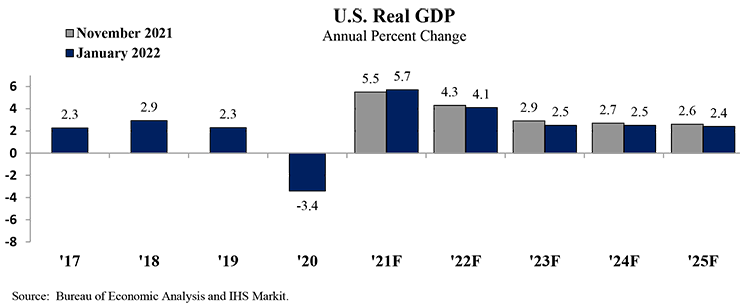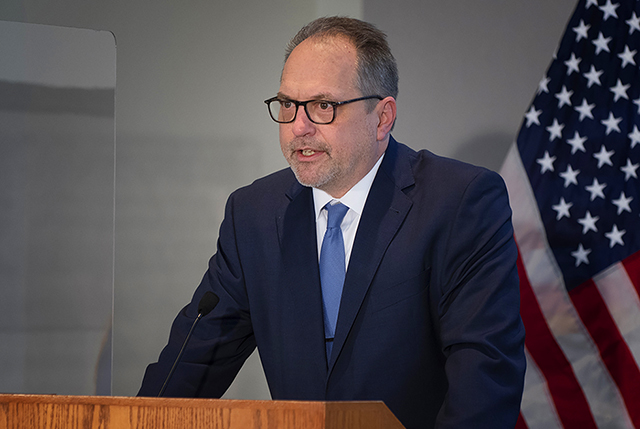If having a record-setting state revenue surplus of $7.75 billion to fight over already posed a challenge to Minnesota politicians, the challenge just got bigger.
A quarterly review and economic update released Monday by Minnesota Management and Budget showed the state tax collections continue to defy best-attempts by forecasters. After correcting for some earlier than expected tax payments, the state’s tax collectors brought in $362 million more than was projected by state economists just two months ago.
While that money can’t be added to that record surplus yet, it shows that tax collections are following a trend begun in the summer of 2020 of coming in higher than expected.
It wasn’t all good news Monday. The quarterly update contained some warnings from the state’s macroeconomic forecast consultant, IHS Markit. That November forecast was based on a rather robust prediction for the national economy that IHS Markit now thinks was too optimistic. As such, the company has somewhat downgraded its expectations for economic growth for the next four years that could be felt when MMB provides its next economic and revenue forecast in February.

[image_credit]Minnesota Management and Budget[/image_credit]
Another change from the November forecast is that IHS now believes the Federal Reserve will begin increasing interest rates much earlier in 2022 than previously thought.
Any change in the national forecast between the November forecast and the February forecast could reduce MMB’s expectations of future tax collections — the number that both Gov. Tim Walz and legislative budget writers will look at when they update the two-year state budget.
But while the forecast is a projection of what tax collections will be in the future, the numbers reported in December and on Monday show actual cash collected from taxpayers. And about half of the $7.75 billion surplus reported in the November forecast is actually already in the state treasury. The rest is forecast to be collected over the next 18 months of the two-year budget period.
According to MMB, the state had already collected $3.1 billion more than projected when the state’s last budget year ended June 30. Since then, actual tax collections exceeded forecast by $657 million in July, August and September — and another $87 million in October.
The Monday report included some details that only a state economist or corporate treasurer might love. The state actually collected $833 million more than predicted in November and December. But the bulk of that, $471 million, is attributed to when some businesses and individuals sent tax payments to the state. According to MMB, some taxpayers made certain payments in December in order to make that money eligible to be deducted from federal income taxes, early payments might reduce projected monthly tax collections in the spring.
Still, that tax payment timing doesn’t account for all of the higher collection. Only $74 million of the $242 million in higher-than-projected individual income tax collections and $397 of the $510 million higher-than-projected corporate income tax collections are due to the timing of tax-payments. Also unaffected by those payments was $69 million in higher-than-expected sales tax collections in November and December.
In addition to the $7.75 billion surplus, three other numbers remain the same after Monday’s report: The state’s rainy day savings account is still $2.656 billion; the state still has $1.15 billion unspent from the money it got via the American Rescue Plan last spring; and it still owes the federal government $1.2 billion it borrowed to cover jobless benefits during the pandemic recession.
Minnesota is not alone in having large revenue surpluses that can be allocated during upcoming sessions. Most states scrambled to accurately forecast the impacts of the pandemic on the economy — both how deep it sunk in the early months and how quickly it recovered starting in the summer of 2020. In addition, all states and many local governments shared in $350 billion in cash from the American Rescue Plan, much of which can be spent outside of the parameters of the act because it’s allowed to cover for tax revenue lost due to the pandemic.






And – a question for the economists in the audience – is there a good fiscal reason why Minnesota can’t use (A) the $1.15 billion unspent from the money we got via the American Rescue Plan last spring to pay back (B) the $1.2 billion we borrowed to cover jobless benefits during the pandemic recession. That strikes me, an admitted amateur, as something that could be rectified in an accountant’s office on a spreadsheet, leaving “only” a few million still on the books to be repaid to the feds by the state. Is that too obvious? Am I missing something?
Nope. The state instead wants to raise taxes (???) on business even more to pay for something they already have the money for.
What about eliminating tax on Social Security and military pensions? Even California and New York don’t tax SS.
It’s likely that some of that will be used to cover the unemployment bill, but the larger businesses that mostly pay for unemployment insurance have been doing just fine during the pandemic and it’s not unreasonable to look to them to cover at least part of the bill, especially since there are other needs out there (supporting health care workers who have been bearing the heaviest load during all of this, for example). The UI bill isn’t the only thing out there, just the only thing mentioned in this story. For example, public higher education in MN has taken a significant hit as students have deferred enrollment because of the pandemic, and could use some support to smooth things out as they restructure, rather than take a huge hit all at once.
Wisest course is to not either spend or cut taxes on chick’s that aren’t hatched, and likely to be stolen by the Covid wolf
Most of the excess is already in the bank.
Per the article half is in the bank
Leave it there a surplus can disappear faster than the Vikings give up a lead
Why continue to tax SS?